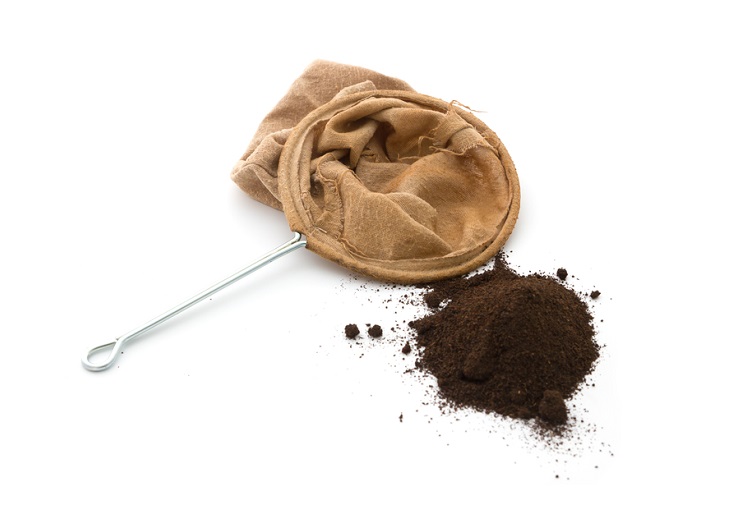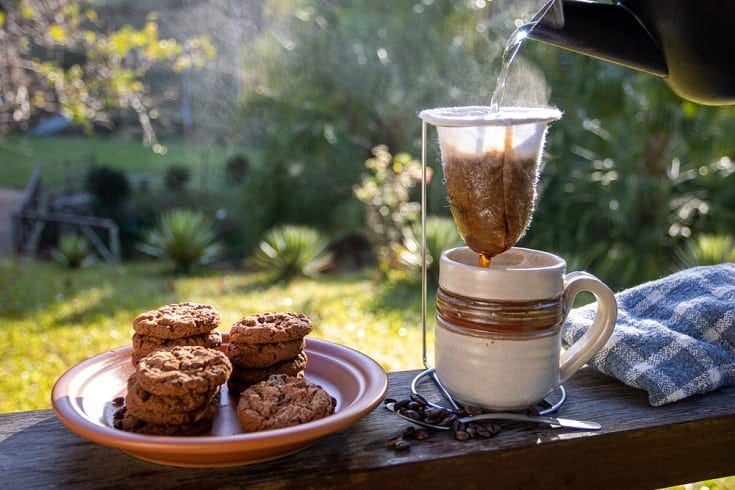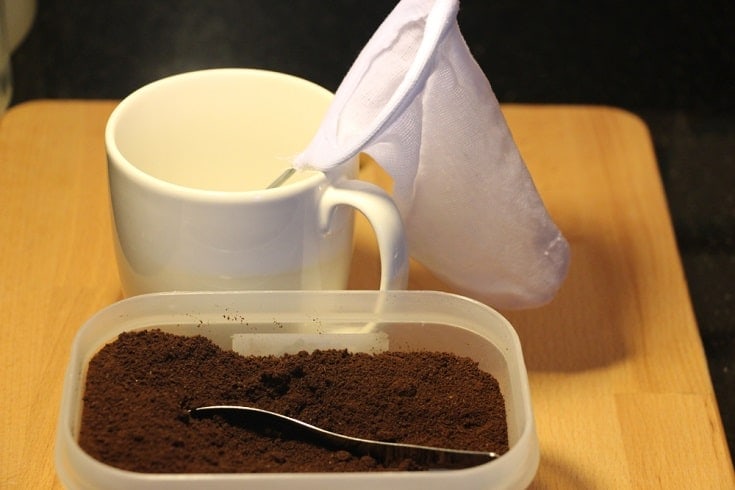
If you like making coffee with a paper filter but are concerned about recurring costs and waste, you should consider brewing with a cloth filter instead. Cloth filters, or coffee socks, are reusable filters that are easy to use, easy to clean, and environmentally friendly alternatives to paper filters. In this article, we’re going to give you an overview of cloth filters and some simple coffee sock instructions to help you decide if they’re right for you. Before you reorder another box of paper filters, grab another cup of coffee and check out the rest of this guide.

Introduction to Cloth Coffee Socks
Cloth filters function virtually identically to paper filters. If you’re familiar with pour-over brewing, you can replace your paper filter with a cloth one and start brewing immediately. A major benefit of cloth filters is their flexibility. You can use the same cloth filter in different-sized brewers without making any adjustments since the filter easily molds to fit any shape.
Cleaning a cloth filter is also very easy. Most coffee socks are made from cotton or nylon and are easy to wash by hand. After brewing, dump the grounds and rinse the cloth filter before laying it out to dry. It only takes a few extra seconds compared to throwing away a paper filter, and you save money while simultaneously cutting down on waste.
You can also use cloth filters in immersion-style brewers. Some coffee socks come with a drawstring or similar closing mechanism that makes them easy to use in a French press or cold brew setup. If you prefer immersion brewing, look for a cloth filter that comes with a way to tie the top closed, or you can rig a tie yourself from spare fabric.

Coffee Sock Instructions:
Here’s a list of helpful equipment to have on hand before you start brewing:
- Coffee beans
- Filtered water
- Coffee grinder
- Kettle
- A kitchen scale
- Cloth filter/coffee sock
- A spoon
- Timer or stopwatch
We prefer to use 20 g of coffee and 300 g of water when we brew with a cloth filter, but you should feel free to experiment with different amounts of coffee and water to find what you like best. It’s very helpful to have a scale around to be precise when you weigh your coffee and water. It makes it much easier to brew consistently delicious coffee when you know exactly how much coffee you’re using.
1. Set up your mug and filter.
Start by placing your coffee sock in your favorite mug. One of the best features of cloth filters is you can brew directly in the mug you want to drink out of, reducing the amount of cleaning you need to do later. Start boiling your water in a kettle.
2. Add ground coffee to the sock.
Add your 20 g of ground coffee to the coffee sock. We like to use a medium to medium-coarse grind in our cloth filters. It will take a little trial and error to find the right grind size for your specific beans.
3. Start pouring the water over the grounds.
Pour 60 g of water over the grounds evenly and start a timer. Let the coffee sit for 1 minute. This first pour is called the bloom phase.
4. Finish pouring the water.
After one minute has passed, pour 200 g of water to reach a total of 300 g. Use a spoon to give the mixture a quick stir when you finish pouring.
5. Remove the filter and enjoy!
Once the water has finished draining, remove the coffee sock from the mug, dump it out the grounds, and rinse your filter. Now serve and enjoy!

Taking Care of Your Coffee Sock

A coffee sock can last for several months before it needs to be replaced if you take proper care of it. When your coffee sock starts to look worn and stressed, it’s probably time to replace it. Even if the filter still looks new, it might need to be replaced if your coffee’s flavor starts to be affected.
It is essential that you clean your coffee sock after each use. Rinse the filter with water and let it dry completely before you put it away. If you put your coffee sock away while it’s still wet, it could become moldy and will need to be replaced.
You should never clean a coffee sock with soap! A few times a month, you should clean your coffee sock more thoroughly with salt. Put a small amount of salt – about a handful – in the coffee sock and rub it with your hands. Don’t forget to rinse the filter carefully and completely to remove any residual salt; otherwise, your next cup of coffee will have a salty taste.

Cloth Coffee Filters: Final Thoughts
Cloth filters are a great alternative to paper filters for people that want to reduce their environmental impact and save some money to boot. They last several months if you clean them regularly and are easy to use in pour-over setups and immersion brewers. Because of their flexibility, affordability, and low waste, we highly recommend cloth filters to most people. You don’t need to alter your recipe or change your brewing process, and you’ll save money in the long run.
RELATED READS:
- How to Make Coffee Filter Flowers (4 Easy Guides)
- 3 Types of Coffee Filters: Which Should You Choose?
- Pour-Over Coffee Guide: How to Brew the Perfect Cup
Featured Image: bochimsang12, Shutterstock
Table of Contents















